Article and Photos by Paul Cyr- eonphader@hotmail.com
New Jersey is no stranger to geological anomaly. Most American rockhounds are familiar with the fluorescent minerals of Franklin and Sterling Hill, and thousands of people from around the globe have graced their collection cabinets with prehnite and other traprock minerals of the Watchung mountains, giving a classic “old school” scientific feel to that shelf of the display. New Jersey has also produced its fair share of paleontological specimens, including many holotypes and species completely new to science. Some of the most interesting finds include gem grade amber with insect inclusions from the Sayreville and Cliffwood Beach areas.
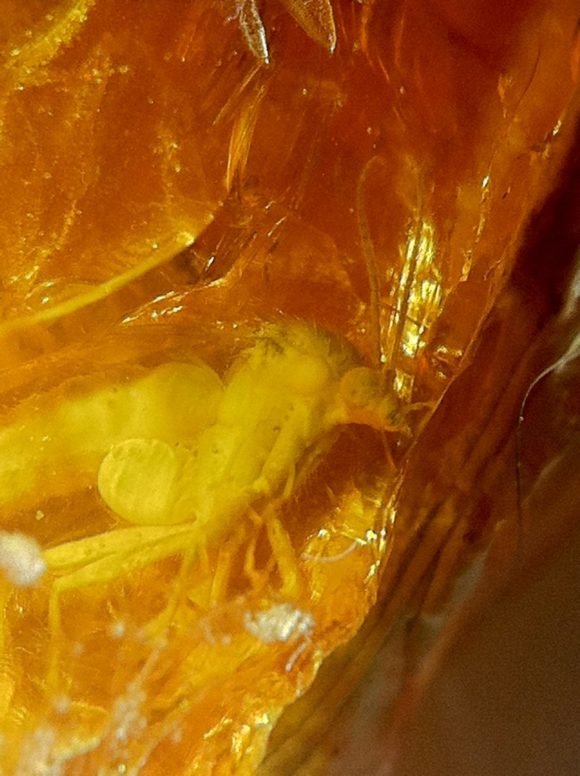
Insect inclusion in a large polished piece of Sayreville amber collected December 3, 1995. FOV 7mm.
The amber occurs within the lignite peat layer above the deep deposits of the South Amboy Fire Clay. The New Jersey amber is the oldest in the Americas with insect inclusions. From this amber, researchers have discovered several new species of ants, including the oldest ones ever documented, giving new branches in the evolutionary line of ants. According to a paper by the American Museum of Natural History researchers, there are a dozen or more amber producing localities in and around Sayreville, but here will will focus on one. In the 1990’s, this locality was monitored by the research department of the AMNH. This study accumulated hundreds of pounds of amber from the Sayreville area, including thousands of specimens with insect inclusions. This was a part of a grand study involving insects included in amber from all over the world. Through this research, many new species of insects were added to taxonomy. Did we mention there is pyrite too?
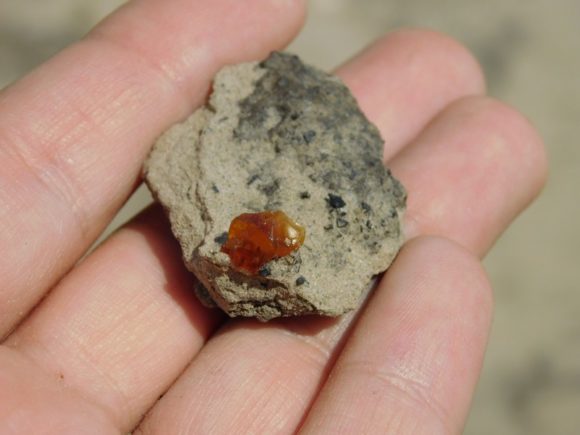
A nice sized piece of gem amber on clay matrix, with lignite. Fresh harvest.
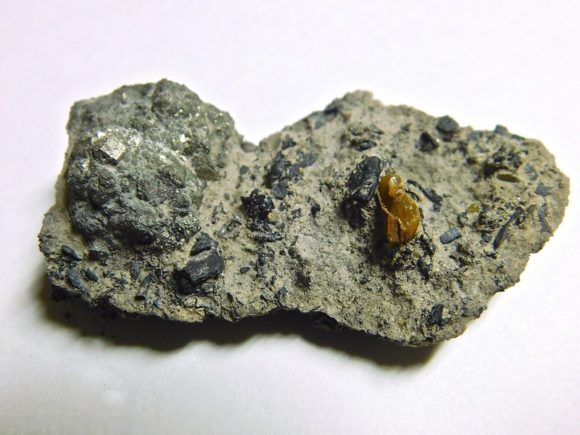
The Good, The Bad and The Ugly: Amber, Pyrite and Lignite in one specimen. With some careful transport tactics, examples like this can be preserved.
You can find the author Paul, along with the website owner, Justin Zzyzx, at the Edison New Jersey Mineral Show – April 7-9th 2017 It is a CAN NOT MISS Event- Click the Banner and sign up for the mailing list for more information!
For tools, it is recommended to bring various shovels, picks, small metal rakes, and other digging and scraping apparatus. The porous, but thick and sandy clay behaves differently depending on how wet it is, so you may want to try a few different tools to figure out what works for you. Bring a small plastic vial or jar to keep your amber isolated and safe.
If you have nothing else, a nearly empty plastic water bottle with a bit of liquid left in it will keep your amber safe, and clean it up a bit too.
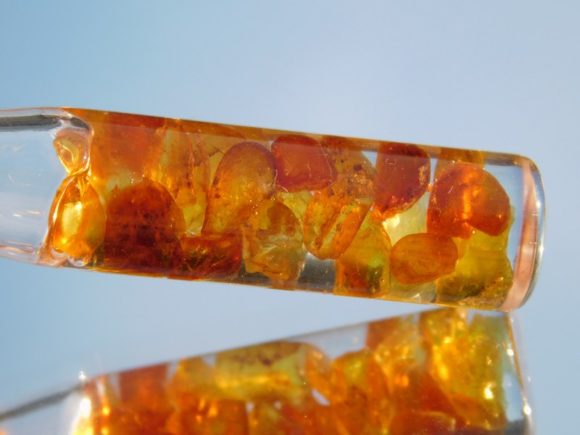
Fully prepared, gem grade amber pendant shows off a warm glow in sunlight.
In my experience, most of the pyrite is found on the surface, and appears to form due to the iron and sulfur nucleating in the center of the puddles in the cracked clay mud. The pyrite is mostly unstable, and will quickly lose its luster and begin to disintegrate if special precautions are not taken. The main key is to keep it completely dry. I have heard that putting it in a cool oven can help remove all moisture. I have used 3-in1 oil to give them a day dip, and take them out to dry. After the pyrite nodule is dry, apply a few layers of spray acrylic. Unfortunately, only a few of my specimens have held up to this point, but they are unique items in our inventory. Some post-pyrite secondaries seem to be found in microcrystals on some of the pyrites as they alter in the weather. Melanterite and jarosite may be present. More research needs to be done on the pyrite alteration at this locality.
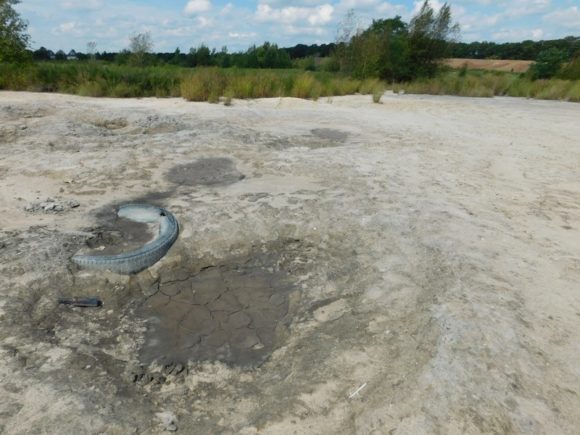
No pyrite in the tire, I checked.
The amber can be founded in small rounded grains along the surface. If you are looking for the large pieces with insect inclusions, you’ll have to dig. The lignite layer is a few feet down (I have heard anywhere from 4 to 9 feet subsurface). Lignite is the precursor to coal, and looks almost exactly like burnt wood. When you get down to this level, you are on the right track. In and around the lignite, you should be able to find evidence of amber soon enough. A nice sized piece with an insect inclusion could be the reward for your hard work.
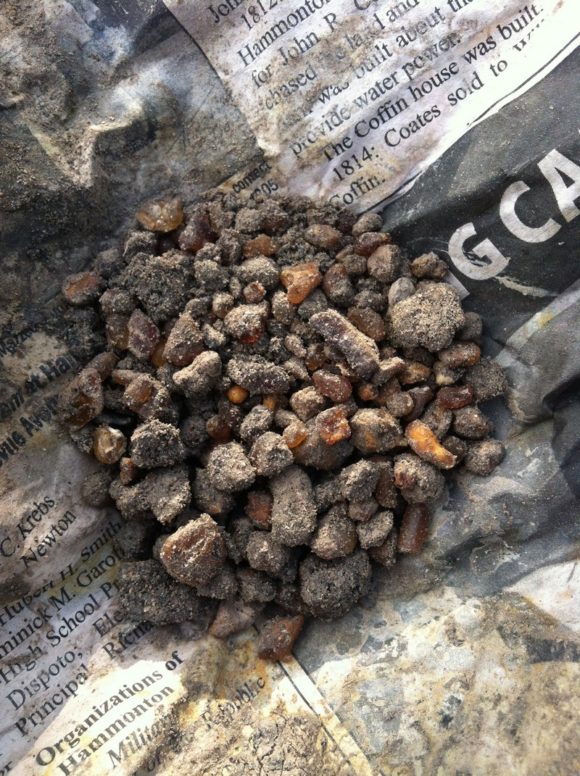
Fresh amber in the field.
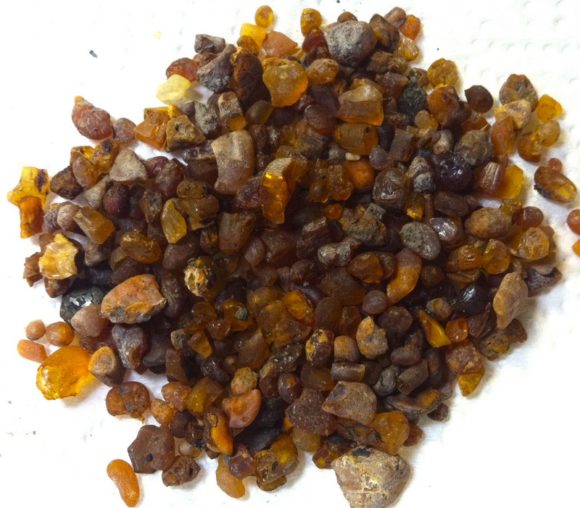
Same pile of amber after first cleaning.
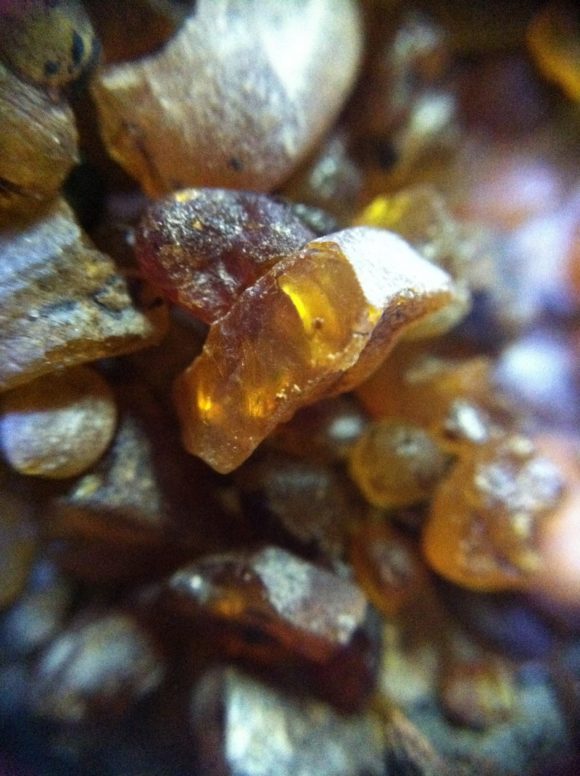
Closeup of the amber.
Plant matter within the amber has been found to be in the juniper family. The lignite peat deposits were probably formed by ancient coastal cedar swamps. The age of this amber has been recorded from 90-92 million years old, in the midst of the Cretaceous Period. Amazing that something so fragile can still exist! This is one of, if not the ONLY locality that produces amber from the same time as the dinosaurs. If Jurassic Park was to happen, we would be thanking New Jersey amber for the DNA. Some of the forms are stalactitic, showing evidence of where it dripped from the tree. It is remarkable to find such objects. Some of the amber is opaque and looks like tan to brown wood opal, with similar luster and conchoidal fracture. The amber ranges from a yellow-hued honey color to a rich cherry red, and can also be brown. It is transparent when wet or polished, making for a beautiful finished product when worked. One gentleman has told me that if you have a big and stable enough piece, it can be polished with a toothbrush and toothpaste- but it takes quite a while. I have a specimen he polished this way in my personal collection. It is almost an inch tall and has a distinct and complete winged insect inclusion. It is one of the treasures of my New Jersey collection.
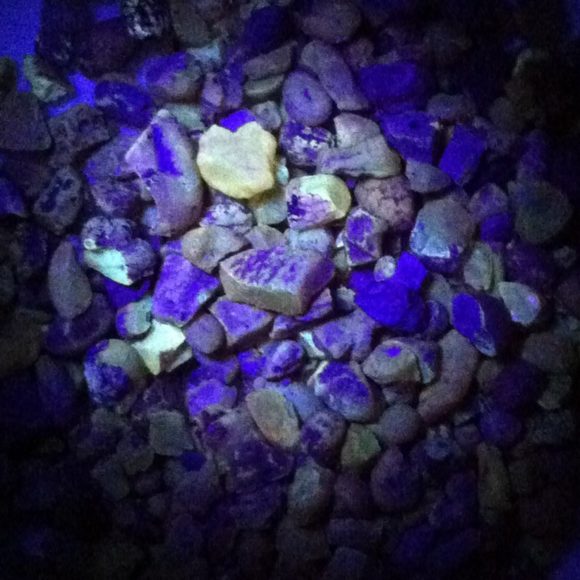
It’s fluorescent. Most of the amber glows brightly in standard longwave UV light.
To get there, plug in Lakeview Drive Sayreville, NJ into your GPS. When you get on this road, you will be in an apartment complex. Keep following to the end of the road, and park in the little cul-de-sac conveniently located at the trail head. The trail may look enticing, but avoid it unless you plan on exploring for possible separate amber pits. On the left side of the path, climb up the hill right next to the parking area and cross the railroad tracks. You’ll come to the other side where there is a trail. Make a left onto the trail, soon the terrain will flatten. Walk a few hundred feet down, and look for a dip in the brush on the right side. It is crude getting in to the pits, and ticks can be plentiful- use caution.
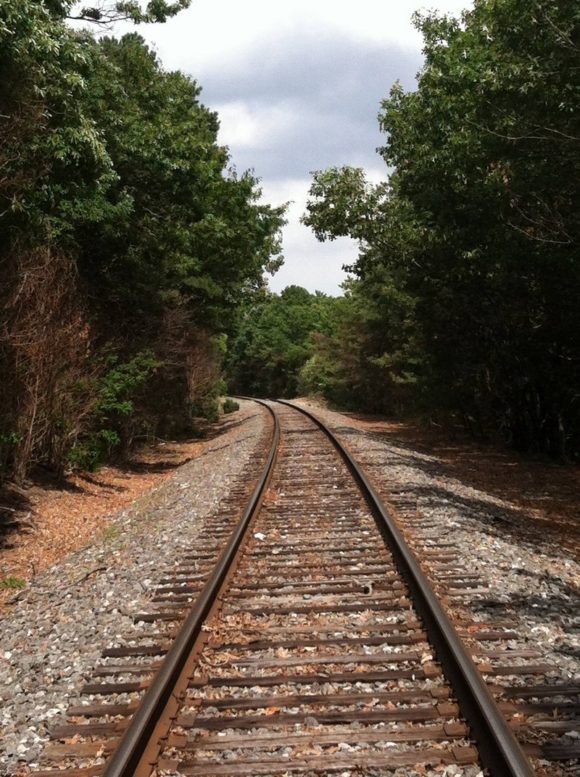
The Railroad to Amber. Cross over here. Beware of trains.
Ramble through the deer trails- a shovel or sifter can act as a shield through the thicket. Out in this stretch of bush you’ll reach the mud pits, dotted with amber and pyrite to the discerning eye. You may want to check a satellite view on Google Earth for a precise look at the field.
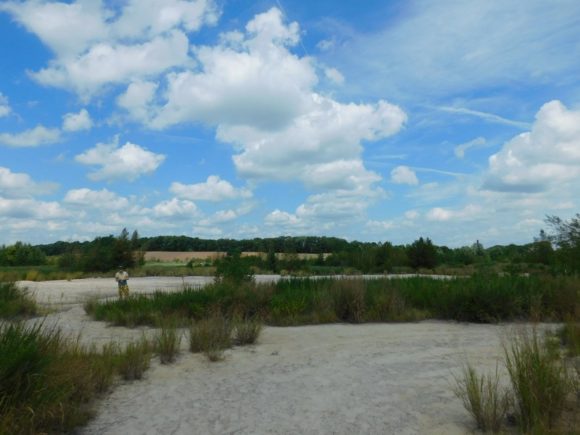
You’ve made it. Welcome to the locality.
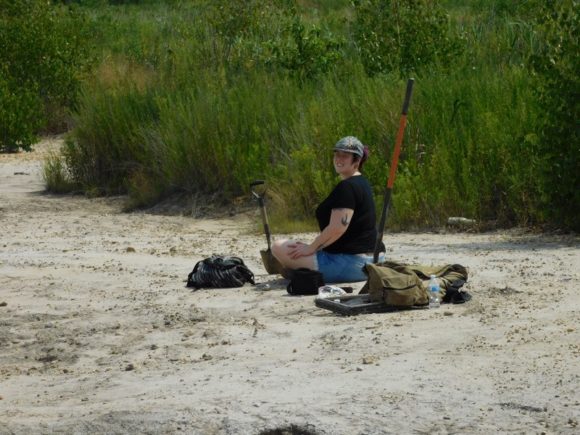
A happy amber collector enjoying the ancient fruits of the labor.
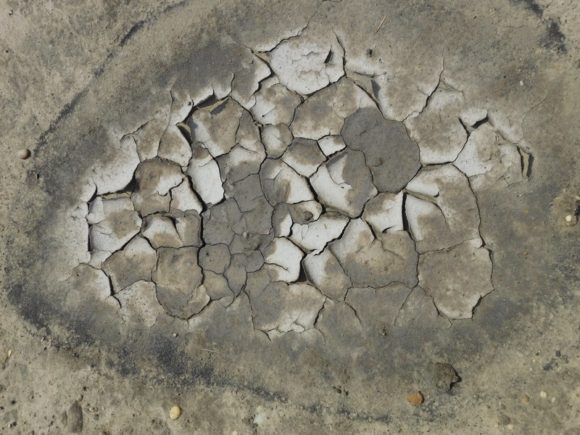
This locality is known for its aesthetic cracked mud.
For lunch, I recommend White Castle in Parlin- new veggie burgers are delish! Good luck, and email me if you find anything substantial! Paul Cyr- eonphader@hotmail.com – you can also find Paul and his minerals for sale on Facebook – at the Deep Seeded Trading Post
This video will give you a visual idea of what to expect at the location
Collect Amber and Pyrite in Sayreville New Jersey created by Justin Zzyzx in 2005, now hosted on Vimeo.
Again, don’t forget to sign up for the mailing list for this great rock and mineral show in Edison New Jersey, one of the biggest shows in the United States!
